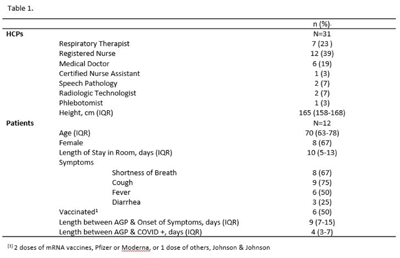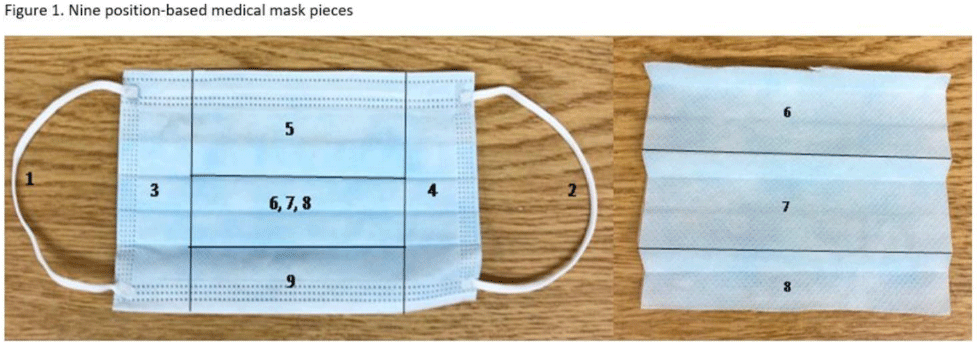666 results
Laxative use in adults with intellectual disabilities: development of prescribing guidelines
-
- Journal:
- BJPsych Open / Volume 10 / Issue 3 / May 2024
- Published online by Cambridge University Press:
- 18 April 2024, e84
-
- Article
-
- You have access
- Open access
- HTML
- Export citation
Healthcare personnel with laboratory-confirmed mpox in California during the 2022 outbreak
-
- Journal:
- Infection Control & Hospital Epidemiology , First View
- Published online by Cambridge University Press:
- 27 March 2024, pp. 1-3
-
- Article
-
- You have access
- Open access
- HTML
- Export citation
The Cretan way of war: status, violence and values from the Classical period to the Roman conquest
-
- Journal:
- The Journal of Hellenic Studies / Volume 143 / November 2023
- Published online by Cambridge University Press:
- 25 October 2023, pp. 24-48
- Print publication:
- November 2023
-
- Article
-
- You have access
- HTML
- Export citation
Healthcare personnel with laboratory-confirmed mpox in California
-
- Journal:
- Antimicrobial Stewardship & Healthcare Epidemiology / Volume 3 / Issue S2 / June 2023
- Published online by Cambridge University Press:
- 29 September 2023, pp. s65-s66
-
- Article
-
- You have access
- Open access
- Export citation
Clinical factors associated with relapse in depression in a sample of UK primary care patients who have been on long-term antidepressant treatment
-
- Journal:
- Psychological Medicine / Volume 54 / Issue 5 / April 2024
- Published online by Cambridge University Press:
- 27 September 2023, pp. 951-961
-
- Article
-
- You have access
- Open access
- HTML
- Export citation
Advocacy at the Eighth World Congress of Pediatric Cardiology and Cardiac Surgery
-
- Journal:
- Cardiology in the Young / Volume 33 / Issue 8 / August 2023
- Published online by Cambridge University Press:
- 24 August 2023, pp. 1277-1287
-
- Article
-
- You have access
- Open access
- HTML
- Export citation
FINITE SOLVABLE TIDY GROUPS ARE DETERMINED BY HALL SUBGROUPS WITH TWO PRIMES
- Part of
-
- Journal:
- Bulletin of the Australian Mathematical Society / Volume 109 / Issue 2 / April 2024
- Published online by Cambridge University Press:
- 27 July 2023, pp. 342-349
- Print publication:
- April 2024
-
- Article
-
- You have access
- Open access
- HTML
- Export citation
p-GROUPS WITH CYCLIC OR GENERALISED QUATERNION HUGHES SUBGROUPS: CLASSIFYING TIDY p-GROUPS
- Part of
-
- Journal:
- Bulletin of the Australian Mathematical Society / Volume 108 / Issue 3 / December 2023
- Published online by Cambridge University Press:
- 20 April 2023, pp. 443-448
- Print publication:
- December 2023
-
- Article
-
- You have access
- Open access
- HTML
- Export citation
Diagnostic stewardship for Clostridioides difficile testing in an acute care hospital: A quality improvement intervention
-
- Journal:
- Antimicrobial Stewardship & Healthcare Epidemiology / Volume 3 / Issue 1 / 2023
- Published online by Cambridge University Press:
- 05 April 2023, e67
-
- Article
-
- You have access
- Open access
- HTML
- Export citation
Presidential Investment in the Administrative State
-
- Journal:
- American Political Science Review / Volume 118 / Issue 1 / February 2024
- Published online by Cambridge University Press:
- 13 March 2023, pp. 442-457
- Print publication:
- February 2024
-
- Article
-
- You have access
- Open access
- HTML
- Export citation
Healthcare workers’ infection risk perceptions of aerosol-generating procedures and affective response
-
- Journal:
- Antimicrobial Stewardship & Healthcare Epidemiology / Volume 3 / Issue 1 / 2023
- Published online by Cambridge University Press:
- 15 February 2023, e29
-
- Article
-
- You have access
- Open access
- HTML
- Export citation
An IRT forecasting model: linking proper scoring rules to item response theory
-
- Journal:
- Judgment and Decision Making / Volume 12 / Issue 2 / March 2017
- Published online by Cambridge University Press:
- 01 January 2023, pp. 90-103
-
- Article
-
- You have access
- Open access
- HTML
- Export citation
PP57 Collaborating In Times Of COVID: The Launch Of The National Wales COVID-19 Evidence Centre
-
- Journal:
- International Journal of Technology Assessment in Health Care / Volume 38 / Issue S1 / December 2022
- Published online by Cambridge University Press:
- 23 December 2022, p. S59
-
- Article
-
- You have access
- Export citation
The Evolutionary Map of the Universe Pilot Survey – ADDENDUM
-
- Journal:
- Publications of the Astronomical Society of Australia / Volume 39 / 2022
- Published online by Cambridge University Press:
- 02 November 2022, e055
-
- Article
- Export citation
Group intervention for sexual minority adults with common mental health problems: preliminary evaluation
-
- Journal:
- Behavioural and Cognitive Psychotherapy / Volume 50 / Issue 6 / November 2022
- Published online by Cambridge University Press:
- 11 August 2022, pp. 575-589
- Print publication:
- November 2022
-
- Article
-
- You have access
- Open access
- HTML
- Export citation
A terrestrial record of climate variation during MIS 11 through multiproxy palaeotemperature reconstructions from Hoxne, UK
-
- Journal:
- Quaternary Research / Volume 111 / January 2023
- Published online by Cambridge University Press:
- 11 July 2022, pp. 21-52
-
- Article
- Export citation
The impact of a comprehensive coronavirus disease 2019 (COVID-19) infection prevention bundle on non–COVID-19 hospital-acquired respiratory viral infection (HA-RVI) rates
-
- Journal:
- Infection Control & Hospital Epidemiology / Volume 44 / Issue 6 / June 2023
- Published online by Cambridge University Press:
- 02 June 2022, pp. 1022-1024
- Print publication:
- June 2023
-
- Article
- Export citation
A late-glacial lake-effect climate regime and abundant tamarack in the Great Lakes Region, North America
-
- Journal:
- Quaternary Research / Volume 109 / September 2022
- Published online by Cambridge University Press:
- 18 May 2022, pp. 83-101
-
- Article
-
- You have access
- Open access
- HTML
- Export citation
SARS-CoV-2 N95 contamination worn under a face shield, via medical mask surrogate, in healthcare providers treating COVID-19
-
- Journal:
- Antimicrobial Stewardship & Healthcare Epidemiology / Volume 2 / Issue S1 / July 2022
- Published online by Cambridge University Press:
- 16 May 2022, pp. s37-s38
-
- Article
-
- You have access
- Open access
- Export citation
Mental health across the early years in the military
-
- Journal:
- Psychological Medicine / Volume 53 / Issue 8 / June 2023
- Published online by Cambridge University Press:
- 24 February 2022, pp. 3683-3691
-
- Article
-
- You have access
- Open access
- HTML
- Export citation





